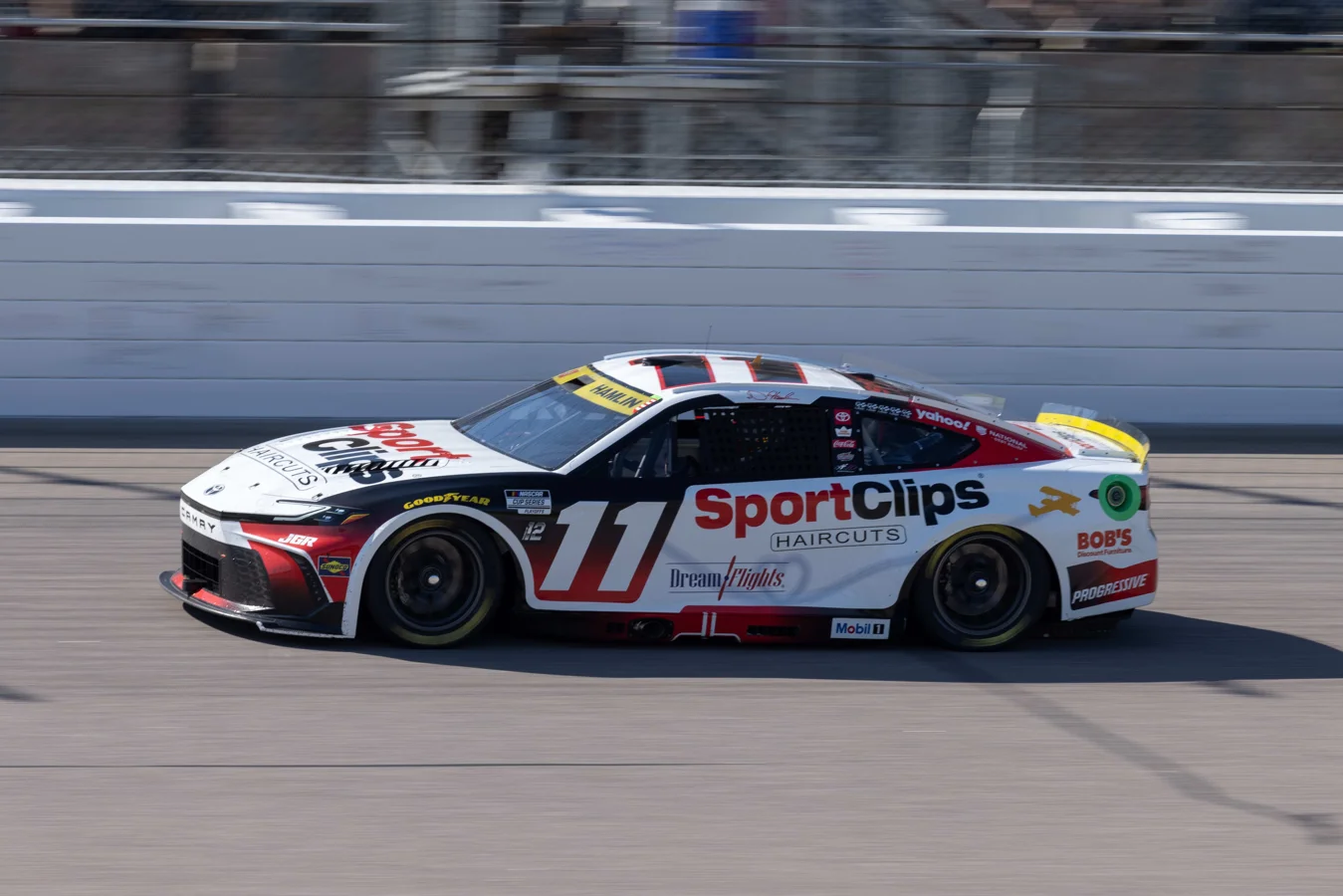Denny Hamlin, a top driver in the sport, has strongly criticized the new NASCAR TV deal, warning that the sport may lose more fans due to shifting broadcasts and falling viewership. Speaking out during a period of declining ratings and divided opinions about NASCAR’s format, Hamlin addressed his concerns as the season’s first under a complex partnership featuring Fox, Amazon, TNT, and NBC unfolds.
Hamlin’s comments add another layer of tension, as the season has been marked by inconsistent on-track excitement, controversy over the playoff format, and public disputes involving key figures like Hamlin himself, who is currently in an antitrust lawsuit with the organization. His recent remarks come just days after a dramatic race at Kansas, where Hamlin’s late move involving Bubba Wallace—co-owned by Michael Jordan—led to Chase Elliott securing victory. The incident has kept attention on Hamlin both as a driver and as a team owner, especially with both he and Wallace fighting to advance in the playoffs.
Concerns About TV Deals and Fan Accessibility
On his Actions Detrimental podcast following the Kansas race, Denny Hamlin refused to apologize to Wallace for the on-track contact and discussed how their team dynamic might be tested moving forward. Yet, it was his broader criticism of the sport’s media exposure that has caused the most stir. This season marks the beginning of NASCAR’s expanded television arrangements, but Hamlin believes the strategy is backfiring and contributing to lost viewership.

Hamlin is particularly concerned that racing across so many different platforms, with the majority on cable or streaming rather than major networks, has made it difficult for fans to consistently follow the sport. He summed up the core issue by asking,
If the NFL “owns” Sundays, what does that mean for NASCAR’s growth? 📺 pic.twitter.com/usetcMSu7M — Dirty Mo Media (@DirtyMoMedia)
This highlights how competition with major sports, like the NFL, is impacting attention and growth for NASCAR.
Fewer Races on Major Networks, Fans Left Searching
Breaking down the numbers, this year only 8 out of 36 NASCAR points races are available on network television. The season’s first three races aired on Fox, and the last three will appear on NBC, with just two other races—Talledega in April and Daytona at the close of the regular season—also showing on broadcast networks. All remaining races have been limited to cable channels like FS1 and USA Network or streaming platforms such as Amazon Prime and TNT.
This fragmented approach is another point of contention for Hamlin. He emphasized,
Just not good. We signed the deal that we signed. We obviously lost a significant amount of network races in this TV deal,
and further elaborated,
And each one of the TV deals that we’ve signed over the last few years we’ve always just taken the most amount of money. You know what I mean? It’s not been about, ‘what’s going to put us on in the most households.’ You’re asking so much of your fans to just keep chasing you around all these different networks. And I know it’s not that hard, but when the NFL is taking such a lion’s share of those eyes right now, record-setting, every single week, people just, that’s their priority. And if football is not on, then I think that you’ve got a legitimate shot at being the next in line.
— Denny Hamlin, Nascar Driver and Team Owner
Comparisons With Other Leagues and Sports
NASCAR’s current broadcast philosophy stands in contrast to what leagues like IndyCar have done. IndyCar opted for a deal with Fox Sports that puts every race on the main Fox broadcast network, which has produced higher ratings and greater stability for their series. While the NFL has successfully maximized revenue through multi-partner TV packages, it still maintains a consistent and prominent network presence—a model that MLB and NBA are attempting to follow as they renew their own deals.
The difference for NASCAR is a near absence from mainstream channels during most of its season. This has made it harder for casual fans to tune in, reducing overall exposure and contributing to a sense of disconnection within the audience. Key figures like Michael Jordan, who co-owns 23XI Racing with Hamlin, as well as competitors such as Chase Elliott and Bubba Wallace, remain invested in the sport’s future, but have been forced to contend with shrinking reach and new challenges.
What’s Next for NASCAR and Its Audience?
For now, there is little chance NASCAR can renegotiate its television deal to increase network broadcasts. Amazon Prime Video and TNT are set to remain broadcast partners for the foreseeable future, making the current arrangement unavoidable for upcoming seasons. However, Hamlin believes that even incremental moves to put more races on major networks such as Fox and NBC could help reconnect the sport with its core audience and attract new fans.
With the playoffs underway, and with Hamlin and Wallace locked in competition both on and off track, NASCAR faces a crucial period. The outcome of the antitrust lawsuit involving Hamlin’s 23XI Racing and the governing body could have significant ramifications. As the season continues, much will depend on whether decision-makers prioritize wide accessibility—putting races in as many households as possible—or continue to focus on maximizing broadcast revenue through multiple partnerships. The future of NASCAR’s viewership may hinge on these choices, as the sport looks to regain ground and restore excitement for existing and potential fans alike, keeping the Denny Hamlin NASCAR TV deal debate at the forefront.
If the NFL “owns” Sundays, what does that mean for NASCAR’s growth? 📺 pic.twitter.com/usetcMSu7M
— Dirty Mo Media (@DirtyMoMedia) September 30, 2025
